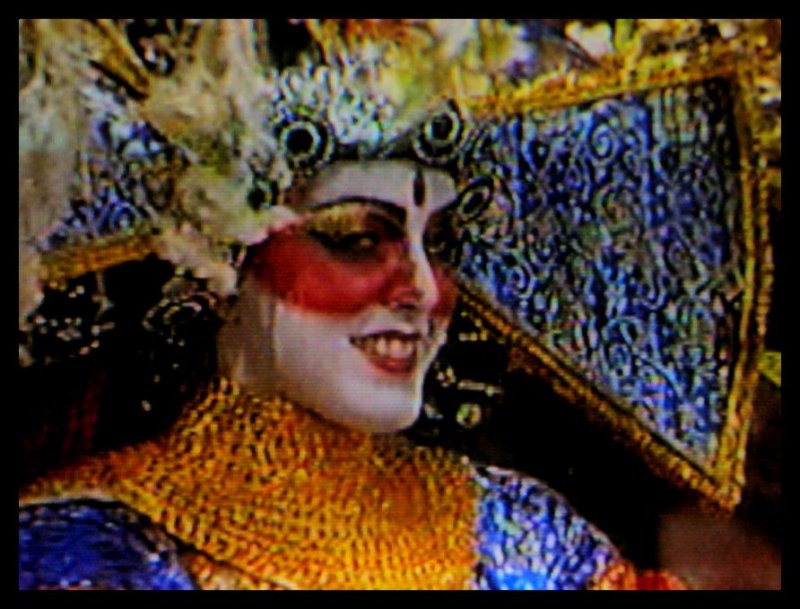For a change I'm taking a little break today and the topic will not be about photographing food. That is, not unless you still believe the moon is made of green cheese! But it may be of use if you want to take photos of the moon and have not yet tried to do so with a point and shoot camera.
Last night, January 29, 2010 was the brightest the full moon will be this year, due to the fact that the moon was in perigee, the part of its orbit closest to earth. The coincidence of the perigee and full moon is something which occurs only once or twice a year.
When I heard that the night was to be special, I went outside around eight-thirty in the evening to have a look and saw the full moon shining brightly in a clear, cloudless sky. So I knew this was to be a rare opportunity to take a good moon shot, even though I don't have a telephoto lens. I used my Olympus SP-560UZ point and shoot camera with an 18x optical zoom, set it up on a tripod and took several shots at different exposures before being quite happy with the one above.
So I would like to pass on the little bit of my experience I gained last night.
The moon is much brighter than you may think, so don't set your camera for a night shot or a long exposure or you will get a white blob surrounded by a white haze rather than a sharp image with visible moon surface features.
Here's what I learned from last night's trials and errors:
Use a tripod.
This will ensure a steady camera and a clear photo.
If you have a point and shoot which has an option for MANUAL (M on the mode dial), use that setting so you can set both the aperture and shutter speed. Otherwise try a daylight semi-automatic setting. Open your OPTICAL zoom to full, but don't use digital zoom.
Here are examples of what you may get using MANUAL at different shutter speeds with apertures f/4.6 and f/4.5:
This above taken with a slow shutter of 1/25 second. You see the brightness of the moon as a white blob with surrounding haze.
The next one above, was taken with a faster shutter speed of 1/80 of a second. You see the focus is getting better and the haze has nearly disappeared, but it is still too bright.
The third one above is almost right, with an aperture of f/4.5 and a shutter speed of 1/125, ISO 50. If you are able to adjust the ISO on your point and shoot, take it down to the lowest setting as you are photographing a bright object that doesn't need a boost in brightness. A lower ISO also insures less noise or digital static in the picture.
Finally I set the shutter speed a little faster, to 1/160 and am happy with the result in the photo at the top of the page, as moon features are quite visible.
I did a little post editing with CodedColor, an inexpensive editing program, using a minimum of Levels and Unsharp Mask, and adding the borders and watermark.
I hope you will find it as easy to do with your camera.
Good Luck!
Subscribe to:
Post Comments (Atom)












No comments:
Post a Comment